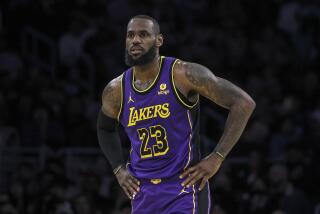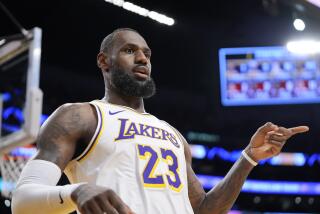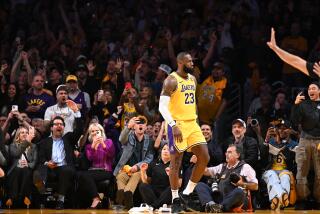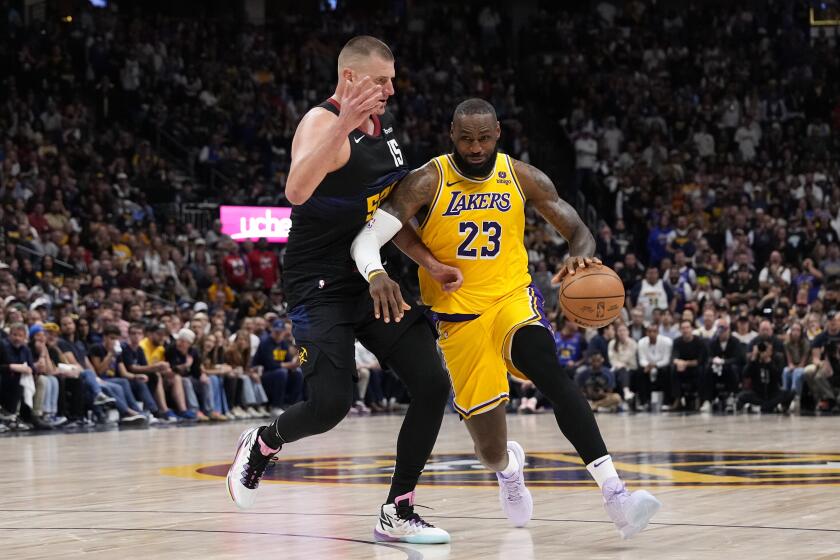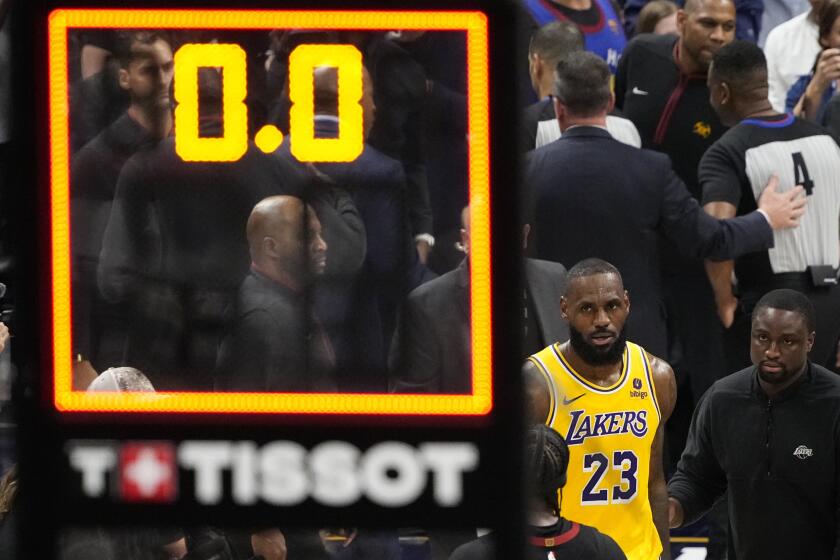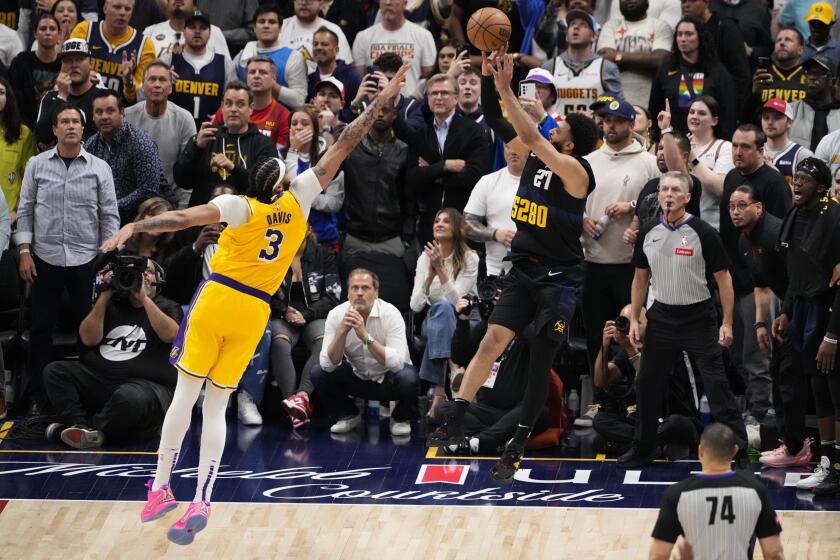Financial options for Lakers and the injured Steve Nash
Though it wasn’t entirely unexpected, the Lakers announced the disappointing news that Steve Nash will miss the final year on his contract due to a recurring back injury.
The Lakers have a number of financial options regarding the injured Nash and his $9.7-million contract.
1. Nash may retire before the end of the season, although he needs a physician to sign off on the fact that he’s retiring for medical reasons. A player can retire at any point, forgoing his salary, but Nash isn’t going to walk away from nearly $10 million.
If he retires for medical reasons, he’ll still receive his money while his salary will come off the Lakers’ books a year after his last game played, which would be on Apr. 8, 2015. Had Nash played fewer than 10 games last season, medical retirement (once it was approved by the league) would have removed his salary immediately.
The Lakers could have in the neighborhood of $3 million in cap space if Nash does retire, but in April there may not be anyone worthwhile still available to sign, with the regular season a week from being over. On the other hand, a few million dollars in cap space might be advantageous heading into the 2015 NBA draft. The Lakers also may be able to take on a player in trade, as long as that person is under contract for the 2015-16 season.
2. The Lakers can apply for a disabled-player exception, for up to half of Nash’s salary. If granted by the NBA, the Lakers would have until March 10 to add a player, either by signing a free agent ($4.85 million maximum), via trade ($4.95 million maximum incoming salary) or by waiver claim ($4.85 million maximum salary).
Any player the Lakers might acquire with a disabled-player exception must have a one-year deal (and not a multi-season contract).
If the Lakers were granted the exception, they might not be able to gain cap relief should Nash retire for medical reasons at a later date.
3. The Lakers can look to trade Nash, whose contract is big enough to enable the Lakers to take back in the neighborhood of $15 million in salary.
The franchise can look to package other players with Nash to take in even more salary, although some of the team’s recently signed players (Jordan Hill and Ryan Kelly) cannot be traded until December or even January.
Any team taking on Nash in trade would be making a financial move with draft and/or youth considerations the fee -- or the Lakers may find a team looking to dump unwanted players who have multiple years left on their deals.
Pau Gasol was once an “unwanted player” by the Memphis Grizzlies. The Lakers would need to find the often-rare mutually beneficial situation.
There’s little reason to deal Nash simply to remove him from the roster, even if he takes up one of the team’s valuable spots (15 maximum). Throwing away a future draft pick or losing a player such as Jordan Clarkson just to open up roster space, or taking on long-term salary, is not a likely path for the Lakers, unless they can find a player they truly covet.
Complicating matters, Nash has a 15% trade bonus, which would be paid by the Lakers. Before the start of the season, Nash would get an additional $1.5 million. His salary-cap figure for the incoming team would be $11.2 million.
Nash’s trade bonus will decrease for every game played by the team. If traded after 41 games, his bonus would be based on the $4.85 million of his remaining salary.
4. The team can buy out Nash’s contract, perhaps offering to pay him in the neighborhood of $8 million to $9 million. Would Nash simply walk away, leaving guaranteed money behind? That’s rare in the NBA, and probably unlikely in this situation.
5. The Lakers and Nash can do absolutely nothing, letting the 40-year-old finish his contract. He would become a free agent next summer and presumably call it quits after a Hall of Fame career -- albeit it after three injury-riddled, disappointing years with the Lakers.
The Lakers may choose to shop Nash to other teams up to the Feb. 19 trade deadline. If they don’t find a deal, he may then retire for medical reasons. Any team that might acquire Nash would not receive the same salary cap relief in April, given that his is a known condition.
Email Eric Pincus at eric.pincus@gmail.com and follow him on Twitter @EricPincus
More to Read
All things Lakers, all the time.
Get all the Lakers news you need in Dan Woike's weekly newsletter.
You may occasionally receive promotional content from the Los Angeles Times.
